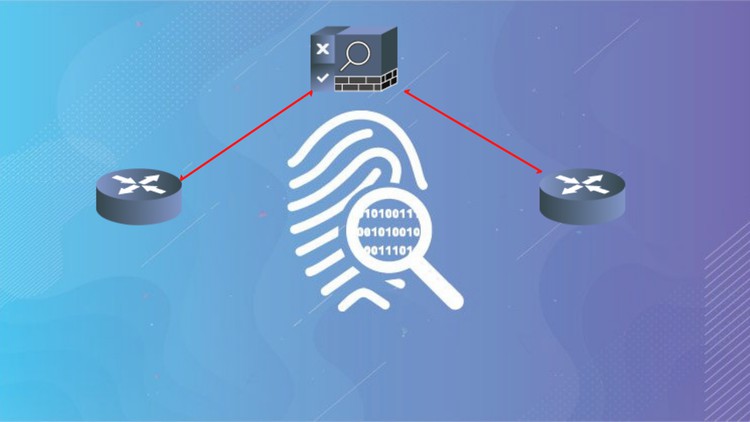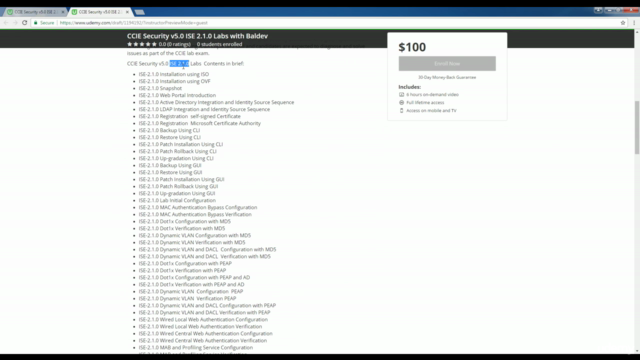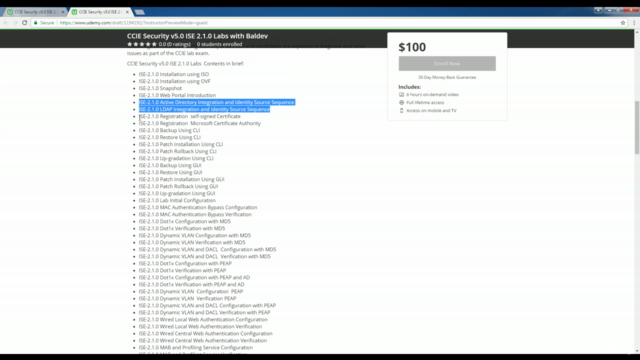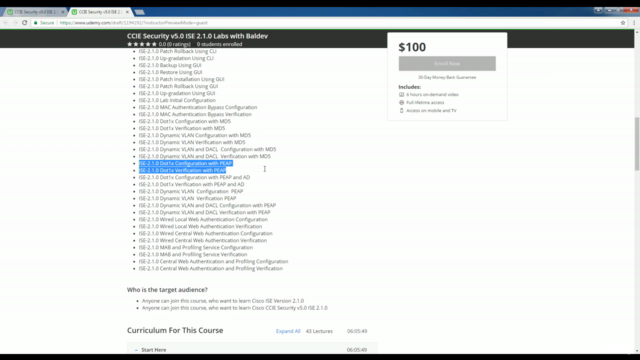CCIE Security - ISE 2.1.0 Deep Dive: Labs

Why take this course?
It looks like you're looking for a comprehensive set of labs to guide you through the installation, configuration, and verification of Cisco Identity Services Engine (ISE) 2.1 and 2.2, with a focus on various authentication protocols like MAC Authentication Bypass, Dot1X with MD5, PEAP, and AD integration, as well as dynamic VLAN assignment and DACL enforcement.
The labs you've listed cover a wide range of topics, including:
- Installation of ISE using ISO or OVF.
- Integration with Active Directory and LDAP.
- Certificate management (self-signed and Microsoft CA).
- Backup and restore procedures.
- Patching and upgrading the ISE appliance.
- Configuration for MAC Authentication Bypass, Dot1X with different authentication methods, and dynamic VLAN assignment.
- Verification of various configurations and protocols.
- Local and central web authentication.
For each lab, you would typically follow a sequence of steps that include:
- Preparation: Ensure all prerequisites are met, such as networking, AD/LDAP configuration, and certificates.
- Installation: Set up the ISE appliance on a server or virtual machine.
- Initial Configuration: Configure basic settings like hostname, NTP, and admin credentials.
- Integration: Integrate ISE with your identity sources (AD/LDAP).
- Authentication Service Configuration: Set up the authentication services you need, such as Dot1X, MAC Auth Bypass, or web authentication.
- Dynamic VLAN and DACL Assignment: Configure policies for dynamic VLAN assignment and DACL enforcement based on user credentials or device status.
- Verification: Test the configurations to ensure they work as expected. This includes verifying that users can authenticate, are assigned correct VLANs, and that policies are being applied.
- Backup and Recovery: Regularly back up ISE configurations and verify that you can restore from these backups in case of an issue.
- Patching and Upgrading: Keep the ISE appliance up to date with the latest patches and updates.
- Documentation: Throughout the process, document your steps, configurations, and any issues encountered for future reference.
Remember that the specific steps can vary depending on your network infrastructure, the version of ISE you are using, and the exact requirements of your environment. Always refer to the official Cisco documentation and best practices when configuring ISE in a production environment.
If you're new to Cisco ISE, it's recommended to start with the basics and gradually move on to more complex configurations. Each lab will build upon the knowledge gained from the previous one, so it's important to understand each step before moving forward.
Course Gallery




Loading charts...